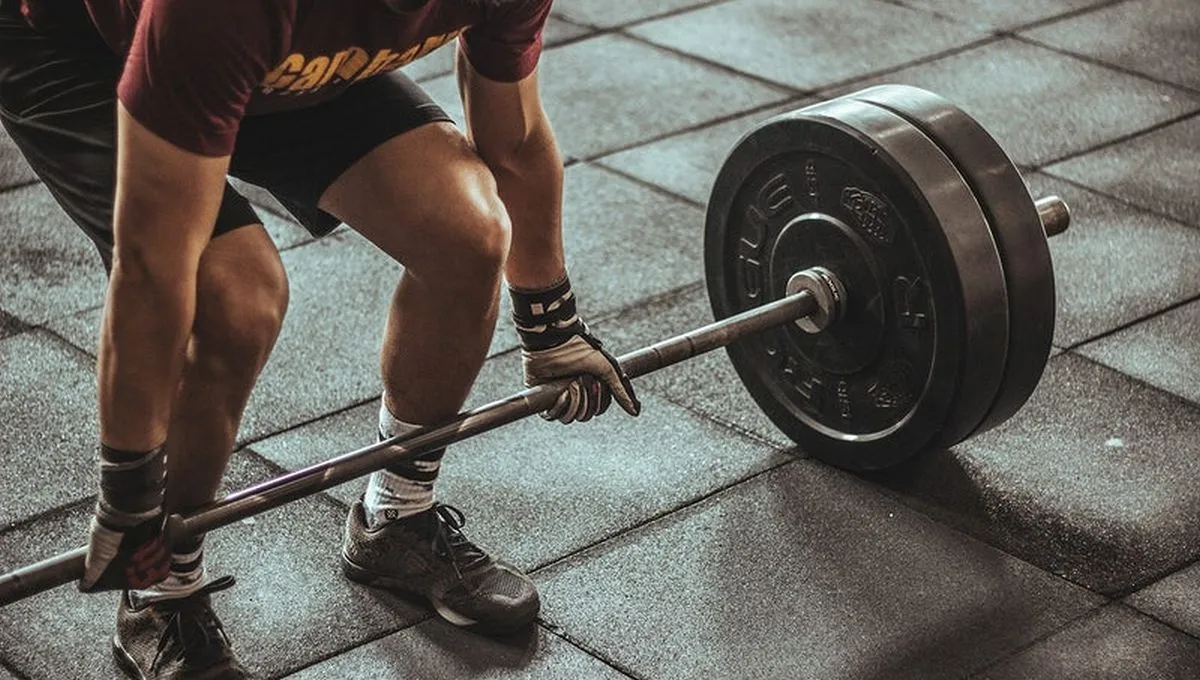The arrangement of exercise in gym is determined by two factors:
- Type of general scheme (consistent, alternating, or circular execution). The general scheme is the order in which each exercise or set is executed in training.
- The order of exercises for each scheme.
Consistent execution of sets
This is the “usual” scheme when you perform all the sets of one exercise and then move on to the next. For instance:
- Bench press 4 x 10, then rest 90 seconds;
- T-bar lifts 4 x 10, then rest 90 seconds.
First, you do all sets of bench presses (resting for 90 seconds between sets), and then proceed to the lifts.
Alternating execution of sets
This scheme, proposed by trainer Charles Polikvin, allows you to save time by reducing pauses of rest between sets, but without sacrificing intensity. You alternate sets in two exercises for different muscle groups (preferably antagonists). For instance:
- Bench press 4 x 10, then rest 45 seconds;
- T-bar lifts 4 x 10, then rest 45 seconds.
In this case, you do the exercise A1 (bench press), relax for 45 seconds, do the A2 exercise approach (T-bar lifts), relax for 45 seconds, return to the bench press and repeat the sequence until you complete all the indicated sets. The break between the sets of bench presses is about 90 seconds, as with sequential execution, but the total execution time of both exercises is reduced.
Circular execution of sets
You do one or three exercises in a row according to one set, then repeat this circle again as many times as planned. For instance:
A1. Dumbbell bench press 12 reps, 30 seconds of rest;
A2. Dumbbell Squats 12 reps, 30 seconds of rest;
A3. Lat pull-down 12 reps, 30 seconds rest;
A4. Romanian deadlift with dumbbells 12 reps, 30 seconds of rest;
A5. Biceps curls on Scott’s bench 12 reps, 30 seconds of rest.
It is not necessary to perform all the exercises in a training session this way; for example, you can do four exercises in a circular mode and two in the usual way or alternating.
Circular training is more suitable for recomposing/burning fat, when you reduce rest pauses to a minimum, for example, up to 10 seconds. But they can also be used for power loads, if you increase the intervals between exercises to 2-3 minutes, which allows you to do many approaches in less time than with a sequential or alternating scheme, while the rest between sets of one exercise will be much longer.
Exercise order
After choosing a scheme for the implementation of approaches in training, you need to correctly place the exercises. Read this first: The choice of exercises in bodybuilding.
Remember the main thing: first you need to do exercises that load the central nervous system more, then less intense. For example, squats should be in the program before legs extensions. There may be exceptions to this rule if you need to previously tire the lagging muscle by loading it with an insulating movement before the complex one.
So choose the exercises for the muscle group being worked out and arrange them in order of decreasing difficulty. For example, you have taken the following exercises to train your chest:
- Crossovers on the blocks;
- Bench press;
- Dumbbell bench press from lying position with on an inclined head up.
The correct arrangement of exercises will be as follows:
- Bench press;
- Dumbbell bench press from lying position with on an inclined head up;
- Crossovers on the blocks.
A simple rule: first do an exercise from the main group, then an additional one, then an auxiliary one, then a corrective one. If you have two exercises in the program from the same group (for example, two main or two additional), first do the one in which you lift more weight.
But also the approach scheme (consistent, alternating, circular) influences to the order of the exercise.
If you consistently do all the exercises for one muscle group, then move on to another group, your workout will look like this:
- Main exercise for the pectoral muscles
- Additional exercise for the pectoral muscles
- Auxiliary exercise for the pectoral muscles
- Main exercise for triceps
- Additional exercise for triceps
- Auxiliary exercise for triceps
This can be done if during training you work out one large muscle group (chest, back, quadriceps muscles) and one or two small ones. If you load two large muscle groups (for example, chest and back), this is not the best option, since the central nervous system will be exhausted when you finish with the first muscle group and proceed to the second.
If during training you work out two or more large muscle groups, or the whole body, it is better to arrange the exercises according to the load. First, assemble the exercises into categories (main, additional, etc.), then arrange so that the large muscles are worked out first. For example, you have chosen the following exercises to train your entire body:
- Bench press
- Overhead press
- Chin-up
- Barbell Squats
- Romanian deadlift
- Barbell curls
All of them are from the category of main exercises, so it remains only to arrange according to the size of the working muscles:
- Barbell Squats
- Romanian deadlift
- Chin-up
- Bench press
- Overhead press
- Barbell curls
If you have taken additional exercises, then follow the same rule: first, divide the exercises into categories, then arrange in each category depending on the size of the muscle being worked out. For example, you have selected the following exercises:
- Bench press (main)
- Leg press in the simulator (additional)
- Bent-over row (main)
- Dumbbell press from sitting position (additional)
- Wide grip deadlift (Main)
- Hammer curls with dumbbells (additional)
First, collect by category.
Main exercises:
- Wide grip deadlift
- Bench press
- Bent-over row
Additional exercises:
- Leg press in the simulator
- Dumbbell press from sitting position
- Hammer curls with dumbbells
Then arrange inside the category according to the size of the muscle group:
- Wide grip deadlift (main)
- Bent-over row (main)
- Bench press (main)
- Leg press in the simulator (additional)
- Dumbbell press from sitting position (additional)
- Hammer curls with dumbbells (additional)
If you use an alternation scheme that is best suited for antagonist muscles, first divide the exercises into muscle groups, for example, during training, you work out your chest and back with the following exercises:
Muscles of the chest:
- Dumbbell fly from lying position on an incline bench with head down
- Bench press from lying position on an incline bench with head down
- Dumbbell bench press on an incline bench with head up
Back muscles:
- Bent-over row
- Lat pulldown
- One-arm dumbbell row
Since the training is carried out according to the alternation scheme, the general order of the exercises will be as follows:
First pair:
A1 – Bench press from lying position on an incline bench with head down
A2 – Bent-over row
Second pair:
B1 – Dumbbell bench press on an incline bench with head up
B2 – Lat pulldown
Third pair:
C1 – Dumbbell fly from lying position on an incline bench with head down
C2 – One-arm dumbbell row
And finally, if you train in a circular pattern, you have several options for arranging exercises depending on the chosen goal.
If your circular workout are about gaining muscle mass or for developing strength (relatively long breaks between sets), you do the same as with a consistent workout: first group the exercises into categories, then build order within the group.
In a circular training session with the production of lactic acid for burning fat, when you move from exercise to exercise almost without interruption, the metabolic system works more than the nervous system, so the arrangement of exercises becomes not so important.
However, it is still better to arrange the exercises in such a way that they do not overlap each other, making it difficult to work with full dedication. For example, if you start training with a dumbbell bench press from sitting position, putting a variation of a bench press after – it is not a good idea, since the same muscles will be involved to a large extent.
Exercises that you should always do at the beginning of a workout
Weightlifting movements (jerk and push) and their options should always be done before any other exercises. These exercises, which include a large number of muscle groups, are technically complex and require a lot from central nervous system, should always be performed first in any program. It seemed to me for granted, but I saw programs compiled for professional athletes, in whom jerks went after the deadlifts, squats, bench presses and bent-over row!
Remember: if you include a weightlifting exercise in the program, always does it first. If two or more, then do the more technically challenging first: jerks should be in front of chest lifts, which in turn should be in front of pushes.







